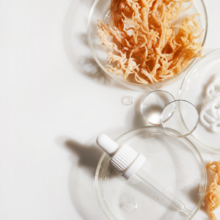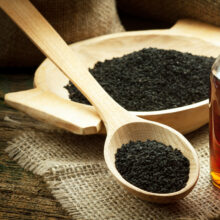The Pros and Cons of Dairy
- Published: Thursday, May 14th 2015
- in Nutrition
by Millie Ruth Lytle, ND, CNS, MPH, is a naturopathic doctor and works as part of the Live Well / Stay Well Program at Tournesol Wellness
 I’ll admit, while I don’t drink much milk, I’m still a dairy-girl. I love butter, cheese, whole milk, and cream. the fattier the better. Oh, how I dream of the dairy from France and Germany. Just the best! And they even have kinds of sour cream products there we don’t even have, like Creme Fraiche and Quark. Milk is baby’s first food. Unpasteurized, straight from mom’s nipple, it contains macronutrients, vitamins, minerals, colostrum, and a list of immune components that are not completely known. While the complete nutritional spectrum of milk remains a mystery, it is the perfect food for a developing infant. Breast is still best. Studies show that even breast milk contaminated with dioxins and mercury is healthier for a baby than formula.
I’ll admit, while I don’t drink much milk, I’m still a dairy-girl. I love butter, cheese, whole milk, and cream. the fattier the better. Oh, how I dream of the dairy from France and Germany. Just the best! And they even have kinds of sour cream products there we don’t even have, like Creme Fraiche and Quark. Milk is baby’s first food. Unpasteurized, straight from mom’s nipple, it contains macronutrients, vitamins, minerals, colostrum, and a list of immune components that are not completely known. While the complete nutritional spectrum of milk remains a mystery, it is the perfect food for a developing infant. Breast is still best. Studies show that even breast milk contaminated with dioxins and mercury is healthier for a baby than formula.
New mothers may be concerned about news of dioxin in breast milk, and some may be wondering if breast feeding is still the safest and healthiest choice for their children. The answer is “yes,” according to medical experts from around the world and the Environmental Protection Agency (EPA), which noted that “the benefits of breast feeding far outweigh potential risks,” when the agency released a draft reassessment of dioxin and its alleged health effects in June 2000.
Humans consume milk longer than other mammals, switching to milk of another mammal, primarily heifer, after its own nursing period has ended. North Americans are raised relying on milk products for protein and calcium. Americans and Canadians consume more dairy than any other country in the world, and yet they suffer from more osteoporosis. While dairy may be a rich source of calcium, it is also a rich source of phosphorus, which promotes the leaching of calcium from bones. So the net effect may be a net calcium loss in those who over-rely on dairy for calcium. Some have wondered if dairy causes osteoporosis. I am one of them. We know that synthetic forms of vitamins A and D that are used to fortify milk are not the ideal types for healthy absorption. Over-relying on one source of food may cause a sensitivity in the long run. Kids who crave cheese, milk, and cream tend to have problems tolerating it. This “drug” like response to milk products is a health problem, connected with eczema, asthma, ear infections, and frequent colds.
Cultured bovine dairy products such as active yogurt, kefir, and cultured butter do contain probiotics, good microflora that contribute to a healthy digestion and immune system. I tend to say these products that have been pasteurized first only to have probiotics reintroduced later contain enough of the good stuff to digest the dairy. Really the bacteria should be the culture that turns the milk into a new food. Instead they use enzymes like rennet to do the job first. Then they pasteurize, or ultra pasteurized to increase shelf-life. Then they add probiotics back. It certainly is not enough to replenish the gut flora after antibiotic use. A supplement is needed to match the negative effects of the drug. If you plan on using food only, this may take a while.
Though dairy cow products may contain good nutrition, protein, some minerals, some fat, they are also potentially problematic. High fat dairy such as butter, soft cheese, cream cheese, and some yogurts contain cholesterol and saturated fat, associated with obesity and diabetes. Whether this is true or not is disputable. Low-fat dairy and skim milk raises Insulin Growth Factor 1 and increases risk of many types of cancer. Natural levels of hormones can promote or cause acne, irregular periods, and other hormonal issues. Hormones found in dairy are not necessarily beneficial for those at risk of tumors, cancer, and estrogen dominance disorders, like fibroids, fibrocystic breast disease, enlarged prostate or BPH, and endometriosis.
The probiotics are actually necessary for digesting saturated fats in the intestine. The lack of bacteria, that would be present in raw milk, is lost with the pasteurization process and this is a key problem. You might not be able to digest your milk, yogurt, butter, cheese, or cream without them. Normally the enzymes and bacteria that were there would help but they have been destroyed. The fact that probiotics eat saturated fat means that they are instrumental in controlling heart disease.
The natural content of dairy is not the only concern. Conventional farming practices requiring mass medication interventions for their herds; it has led to contaminated dairy products with antibiotics, hormones, and remnants from poor quality feed diminishing the overall nutritional benefits and safety. No surprise then that organic and pasture-fed cows produce milk and milk products thought to have fewer undesirable contaminants.
Another concern for those consuming milk and dairy products is its high propensity for causing digestive intolerance. On average, 80 percent of Asian and Native Americans are lactose intolerant, 75 percent of African Americans, 51 percent of Hispanic Americans, and 21 percent of Caucasian Americans. Increasingly, people may be allergic to a milk protein called casein. They may also be intolerant to milk sugars, called lactose. Lactose intolerance may begin in infancy as a causal factor for reflux conditions and digestive disturbances. Links to allergic and inflammatory sequelae such as frequent ear infections, eczema, and asthma have all been investigated but not proven. Later on in life, consumption of cow dairy, especially low-fat varieties, has been shown to be a common cause of acne in adolescence as well as adulthood. Other clinical symptoms of dairy intolerance may be Premenstrual Syndrome (PMS), recurrent yeast infections, chronic sinusitis, and Irritable Bowel Syndrome (IBS).
People who would like to experiment with dairy-free eating may consult a knowledgeable allergist, certified nutritionist, or naturopathic doctor who can lead them on an elimination diet. For some quick substitutions in the meantime, consider sheep or goat’s milk and their butters, yogurt, and cheeses. Goat and sheep dairy products do not contain as much lactose, nor are their proteins as problematic as casein from dairy cows. Vegan options include organic soy milk, almond, hemp, oat, rice and/or brown rice, and coconut milk (one of my favorites). I recommend the unsweetened versions whenever possible. Fortunately the allergy-free food industry has grown and so these options are becoming more widely available in grocery stores, health food stores, and even convenience stores.



